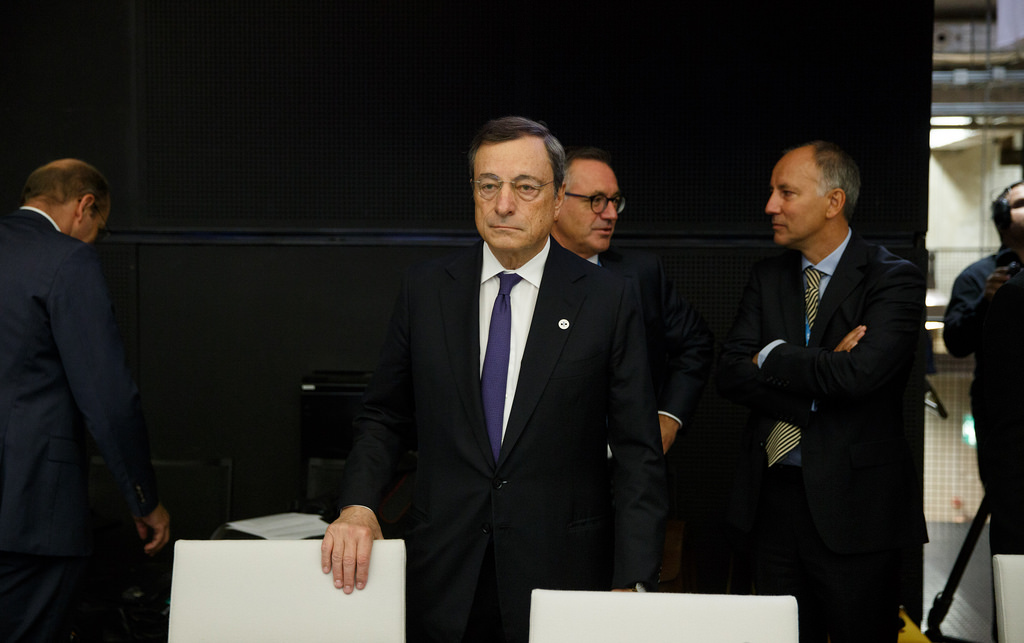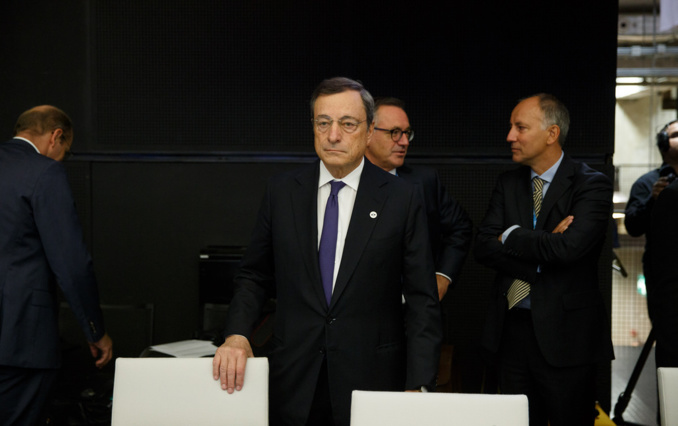ECB President Mario Draghi announced the end of the quantitative easing program (QE). Recall that the European regulator has been purchasing bonds of Eurozone countries and corporations since March 2015 in an effort to fight deflation (earlier, large-scale concessional lending programs were conducted only on a returnable basis). Since January 2018, the regulator has already halved asset purchases, to € 30 billion a month, and since September, the buy-out volume has been halved as well, to € 15 billion. In total, $ 2.6 trillion were bought from the secondary market. The ECB plans to be reinvesting these funds (at the time of redemption of bonds) "for a long period after the key rate starts growing," the bank said.
However, this will not be soon: the refinancing rate is left zero, the emergency lending rate and the deposit rate also have not changed (0.25% and minus 0.4%, respectively). The ECB announced plans to keep them at this level at least until the end of the summer of 2019, “in any case, as long as needed according to increase in inflation in accordance with current expectations.” “The end of QE actually switches off the ECB’s autopilot mode - now the bank’s decisions will again be more dependent on the incoming statistics; the bank managed to complete the program without causing a correction in the market,” ING Bank noted.
Mario Draghi said in his statement that the statistics were “weaker than expected”: external demand is deteriorating, having a counter-inflationary effect. However, the head of the ECB expressed optimism about state of domestic demand in the euro area. In its own forecast, the ECB raised its inflation forecast for 2018 from 1.7% to 1.8%, but for the next, it has been lowered to 1.6% from 1.7%. Estimates of GDP growth in 2018 were also reduced from 2% to 1.8% (as of 2019, from 1.8% to 1.7%). According to Eurostat, inflation in November slowed to 2% versus 2.2% in October, mainly due to lower energy prices. Moreover, the European Central Bank expects that this figure will further decrease in the coming months due to the continued decline in oil prices. However, a reduction in unused capacity and an increase in employment in the labor market make it possible to count on a rise in domestic prices, Mr. Draghi said.
Note that the US Federal Reserve System terminated the last similar program much earlier, in October 2014 (the first QE program was launched in 2008, and later regulators in the UK and Japan began to buy back assets). In total, since 2008, the size of the assets on the Fed's balance sheet had increased fivefold - from $ 900 billion to $ 4.5 trillion, of which $ 2.46 trillion falls on government bonds (14% of their total volume). In October 2017, the regulator began the reverse process, initiating a balance clearing through the sale of securities. Nevertheless, the total assets of the central banks of the world continued to grow due to purchases by the ECB (since 2007 they increased from $ 3.2 trillion to $ 15 trillion).
source: reuters.com
However, this will not be soon: the refinancing rate is left zero, the emergency lending rate and the deposit rate also have not changed (0.25% and minus 0.4%, respectively). The ECB announced plans to keep them at this level at least until the end of the summer of 2019, “in any case, as long as needed according to increase in inflation in accordance with current expectations.” “The end of QE actually switches off the ECB’s autopilot mode - now the bank’s decisions will again be more dependent on the incoming statistics; the bank managed to complete the program without causing a correction in the market,” ING Bank noted.
Mario Draghi said in his statement that the statistics were “weaker than expected”: external demand is deteriorating, having a counter-inflationary effect. However, the head of the ECB expressed optimism about state of domestic demand in the euro area. In its own forecast, the ECB raised its inflation forecast for 2018 from 1.7% to 1.8%, but for the next, it has been lowered to 1.6% from 1.7%. Estimates of GDP growth in 2018 were also reduced from 2% to 1.8% (as of 2019, from 1.8% to 1.7%). According to Eurostat, inflation in November slowed to 2% versus 2.2% in October, mainly due to lower energy prices. Moreover, the European Central Bank expects that this figure will further decrease in the coming months due to the continued decline in oil prices. However, a reduction in unused capacity and an increase in employment in the labor market make it possible to count on a rise in domestic prices, Mr. Draghi said.
Note that the US Federal Reserve System terminated the last similar program much earlier, in October 2014 (the first QE program was launched in 2008, and later regulators in the UK and Japan began to buy back assets). In total, since 2008, the size of the assets on the Fed's balance sheet had increased fivefold - from $ 900 billion to $ 4.5 trillion, of which $ 2.46 trillion falls on government bonds (14% of their total volume). In October 2017, the regulator began the reverse process, initiating a balance clearing through the sale of securities. Nevertheless, the total assets of the central banks of the world continued to grow due to purchases by the ECB (since 2007 they increased from $ 3.2 trillion to $ 15 trillion).
source: reuters.com



















